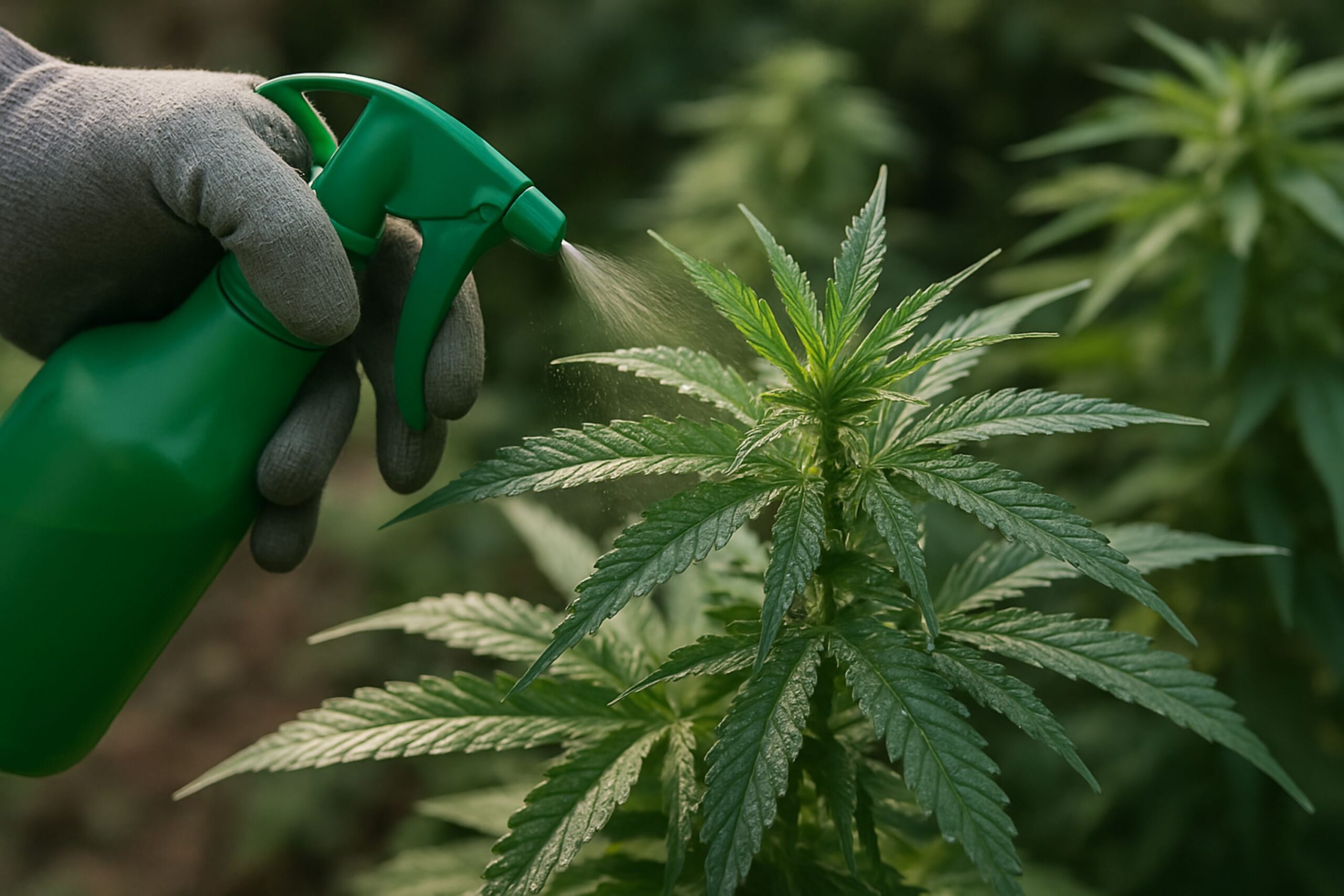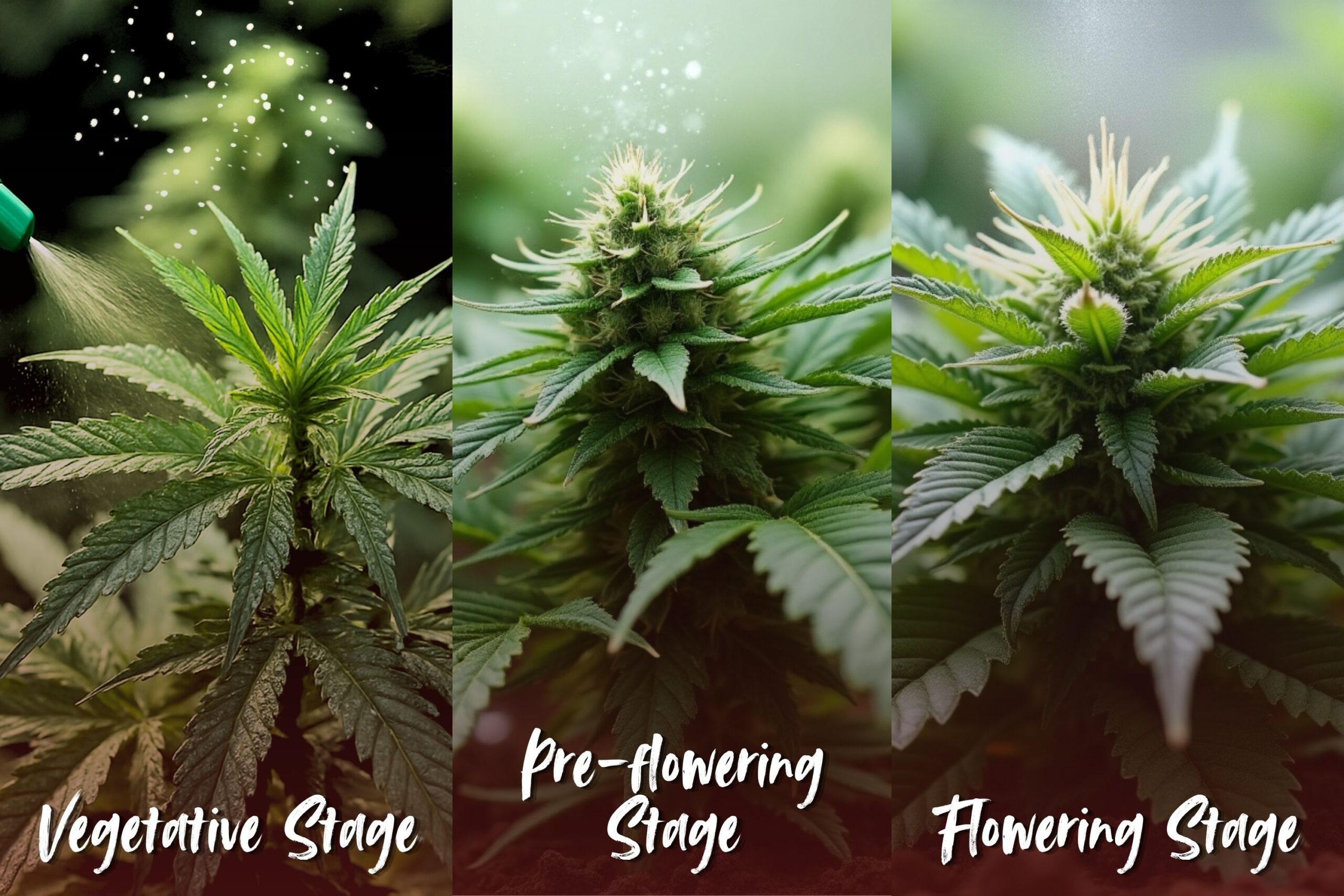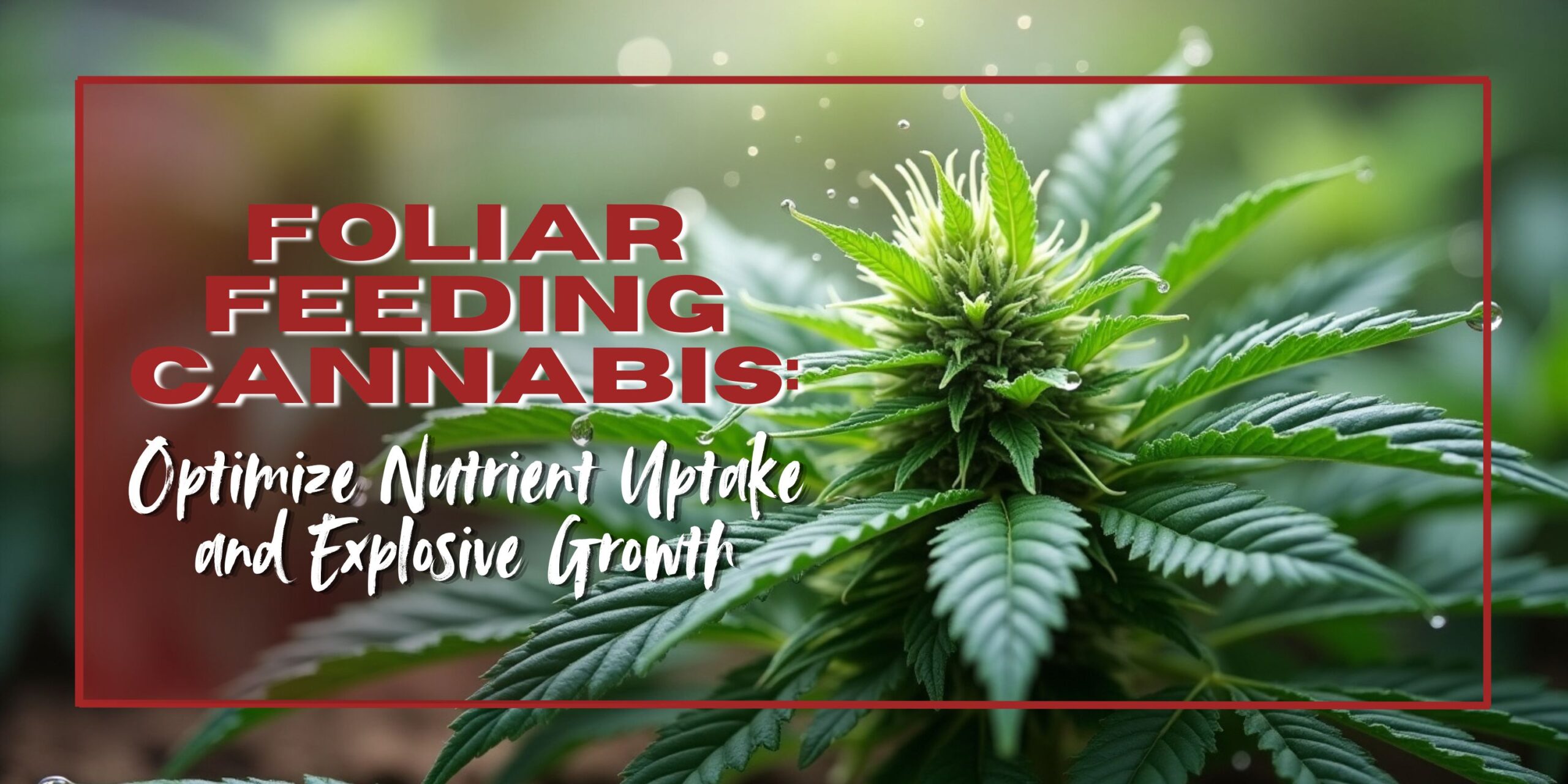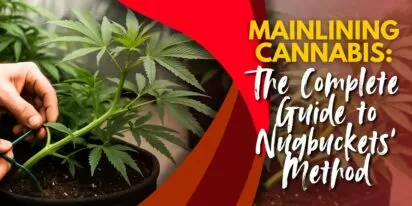Foliar feeding cannabis refers to the process of spraying liquid nutrients on a plant’s leaves, thus facilitating the uptake of nutrients by leaves as compared to roots. For cannabis cultivation, this process provides a quick method of delivering nutrients that will immediately address deficiencies and optimize the well-being of plants. Unlike root feeding where nutrient uptake takes place via the substrate or soil, cannabis foliar sprays enable growers to circumvent potential hurdles such as nutrient lockout, pH stress, or root rot. This renders foliar feeding a powerful corrective and supplementary tool, especially indoors where the environment can be controlled to exact specifications for optimal absorption.
The Science Behind Foliar Absorption in Cannabis Plants

Foliar nutrient uptake is a complex interplay of physical, chemical, and biological elements. The outermost layer of the cannabis leaf, the cuticle, is hydrophobic and waxy and is formed to avoid excessive moisture loss and pathogen entry. It also presents the first barrier to foliar nutrient uptake. To penetrate the cuticle, foliar sprays must be formulated with the correct droplet size, pH, and sometimes assisted by surfactants — chemicals that reduce surface tension and improve wetting and spreading of the spray on the leaf surface.
Environmental conditions have a significant influence on the efficacy of foliar feeding. Stomatal opening is promoted by high humidity, enabling more absorption to take place, but low humidity closes stomata and hinders uptake. Similarly, temperature influences cuticle permeability — too high a temperature will lead to higher evaporation rates, decreasing the contact time of nutrient solution and leaf. Therefore, growers need to plan for foliar spraying in the morning or just before lights-off for maximum uptake in indoor systems. In addition, maintenance of foliar spray for weed solution in the pH range of 5.7 to 6.3 is essential because the ions of the nutrients are best bioavailable to the plant between these pH ranges.
When and How to Use Foliar Feeding At Cannabis Growing Stages

Vegetative Stage: Increasing Leaf and Branch Development
Vegetative development is marked by exponential growth of leaves, stems, and roots. Plants in this stage need highest amounts of macronutrients like nitrogen and calcium. Nitrogen stimulates the growth of chlorophyll and greening in general, while calcium plays a role in firm cell wall growth as well as strength and structure. Foliar application now provides an instant and direct way of supplying these nutrients, especially where initial deficiency symptoms occur. Yellowing lower leaves or poor lateral growth, for example, can be an indication of nitrogen or calcium deficiency, which can be promptly addressed by concentrated foliar sprays.
To achieve maximum results, foliar sprays during the vegetative growth should be done two or three times a week with a light mist to avoid wetting the leaves. Rotating nutrients is also critical — alternating nitrogen-focused sprays with micronutrient blends — in order to prevent the plant from being bombarded with one element only. Use of kelp-based foliar fertilizers or organic growth stimulants with high cytokinin levels can also promote cell division and enhance shoot proliferation, preparing the plant for a healthy transition into pre-flowering.
Pre-Flowering: Bud Formation Initiation
As the plant moves from vegetative to flowering phase, its nutrient needs shift toward phosphorus, potassium, and magnesium. These nutrients are essential for flower initiation, bud formation, and energy transport. Phosphorus stimulates root growth and early flower positions, while potassium regulates water intake, enzyme activation, and sugar transport — all of which are critical during reproductive development. During this period, foliar feeding can help fortify these nutrients rapidly, giving the plant the building blocks it requires for a strong foundation to flower.
Importantly, foliar feeding during pre-flower should continue timed with precision. Use only when flowers are initially forming and not spray on new pistils or preflowers directly. Nutrients need to be diluted to about ¼ of their standard root feeding strength to prevent phytotoxicity. For growers’ CO₂-enriched or high-lighting systems, foliar sprays can also serve as an ancillary delivery system to provide for higher metabolic rates during this extremely active growth stage.
Flowering Stage: Stop Use or Use with Caution
When the cannabis plant reaches full flowering, its attention shifts to reproductive growth, resin production, and terpene formation. Spraying becomes less frequent and even risky at this stage. The tight cluster and limited air space of flowering crops create an environment conducive to mold, mildew, and fungal infection. Spraying at this time — especially on the buds — adds unnecessary moisture and jeopardizes flower quality, flavor, and storage life.
Come flower mid to late (weeks 4–8+), foliar feeding must be discontinued completely. Nutrient sprays have the potential to contaminate trichomes and influence the aroma, flavor, and burn quality of the harvested product. In addition, foliar residues can disrupt flushing regimens and dry/cure consistency. At this stage, nutrient management must be restricted to the root zone, using clean, pH-balanced water and tight nutrient tapering to set up for a high-quality harvest.
Essential Nutrients Provided through Foliar Feeding
The advantage of foliar-feeding weed lies in its ability to offer precise amounts of nutrients directly to plant tissues. Each nutrient serves a unique role throughout cannabis development, and there are certain elements that are more ideal for application via the leaf because of their mobility, response to deficiency, and uptake characteristics. Micronutrients in particular are suitable for delivery using the foliar technique because they tend to be locked out within the root environment by pH or substrate interactions.
Magnesium is among the most commonly used nutrients via foliar sprays. As the central atom within chlorophyll molecules, magnesium is essential for the trapping of light energy in photosynthesis. Deficiencies tend to appear as yellow in the mid-veins on older leaves and will quickly reduce plant efficiency. Magnesium sulfate (Epsom salt) mixed at ½ tsp per quart of water is an easy, good foliar spray cannabis, inducing rapid responses where root uptake is impaired.
Calcium is also an important nutrient adequately provided in the form of foliar sprays. Even though calcium is less mobile within the plant, it is a major contributor to the formation of cell walls, root growth, and disease resistance. Calcium deficiency will result in leaf necrotic tips, warped growth, and weak stems. Foliar feeding of calcium nitrate or any other calcium water-soluble sources corrects early-stage calcium deficiency, especially under conditions where transpiration is reduced to minimum.
Iron, zinc, manganese, and boron also are routinely supplemented in foliar mixes. All of these micronutrients do everything from make chlorophyll to activate enzymes and facilitate the germination of pollen. The chelate forms of micronutrients such as EDDHA or EDTA-bound micronutrients are particularly well-adapted to foliar entry since they provide enhanced stability and solubility. Foliar application every 10–14 days during veg can fine-tune plant function and prevent secret deficiencies from halting growth.
Foliar Feeding Best Practices: Techniques and Tools for Success
To get the most out of foliar feeding, we need to practice some best practices. Spray with a fine-mist sprayer so that you will have an even coating on tops and bottoms of leaves. Spray until leaves are lightly coated but not dripping. This gives you the proper balance of sufficient contact between nutrients and minimal runoff.
Make fresh nutrient solutions for every application. Nutrients become spoiled if left in solution for some time, especially organic chemicals, which will ferment or provide a medium for pathogens. Apply clean, pH-balanced water and mix nutrients according to the manufacturer’s recommendations, usually ¼ to ½ the strength used for root feeding.
Always test on one plant or spot before full use. Excessive foliar nutrient concentrations can cause phytotoxicity, exhibited as burning, curling, or spotting of the leaves. If no reaction occurs after 24 hours, use full strength.
Finally, proper ventilation and air circulation after spraying help to reduce excessive leaf moisture, stopping mold or mildew growth — an important consideration, particularly in indoor or greenhouse conditions.
Blending Foliar Feeding with a Whole Nutrient Program
Foliar feeding should be treated as a strategic supplement, and not a replacement of soil or hydroponic feeding. Foliar feeding performs best when it is used proactively during periods of growth changeover and reactively to adjust evident deficiencies. A whole program is a consistent root-zone feeding with occasional foliar sprays to address momentary demands or deficiencies.
Through observation of your plants and foliar feeding with precision, we can unlock the potential for higher yields, improved plant health, and optimum nutrition efficiency. The method works especially effectively under high-performance cultivation situations when attention to detail is the gap between poor and excellent crops.
Final Thoughts: Smart Application Means Healthier Plants
When implemented wisely, foliar feeding is an integral part of the cannabis grower’s toolkit. It promotes recuperation, promotes growth in make-or-break situations, and augmenting conventional feeding protocols. When one masters the art of such a method, it means a lot more than greater yields — it instils control, vigor, and steadiness in every grow cycle.















